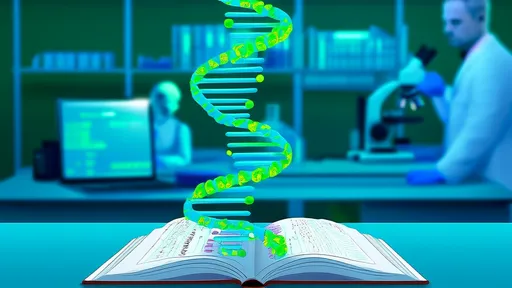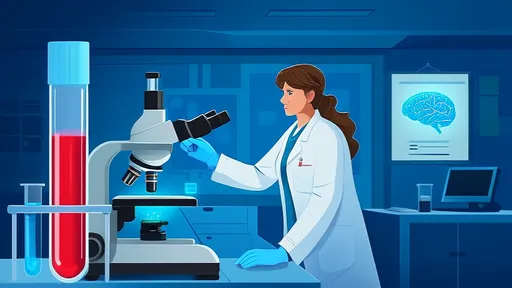The glow of smartphone screens has become the modern campfire around which we gather, yet this constant connection may be rewriting our neural circuitry in ways we're only beginning to understand. Neuroscientists are uncovering disturbing parallels between social media engagement patterns and the brain changes observed in substance addiction, raising urgent questions about how our digital diets shape cognition and emotion.
The Dopamine Dilemma
Every notification triggers a microburst of dopamine, the same neurotransmitter implicated in drug addiction and gambling disorders. Functional MRI studies reveal that habitual social media users show heightened activity in the ventral striatum - the brain's reward center - when anticipating social feedback. Over time, this creates a neurological "tolerance" where ordinary interactions fail to satisfy, driving compulsive checking behaviors.
What makes social media uniquely potent is its variable reinforcement schedule. Unlike predictable rewards, the irregular timing of likes and comments taps into the same psychological mechanisms that make slot machines so addictive. The brain's ancient reward pathways, evolved to seek scarce resources, become hijacked by artificial social validation metrics.
Structural Shifts in the Social Brain
Longitudinal studies tracking adolescents over several years demonstrate measurable cortical thinning in regions associated with emotional regulation among heavy social media users. The anterior cingulate cortex, crucial for impulse control, shows reduced gray matter density that correlates with self-reported compulsive use.
Simultaneously, the amygdala - our emotional alarm system - becomes hyperreactive. This neural hypersensitivity helps explain why digital natives report feeling emotionally drained after scrolling sessions. The constant low-grade stress of curated comparisons and fear of missing out (FOMO) keeps the amygdala in a state of chronic activation.
The Attention Paradox
Multitasking across platforms appears to be training brains for distraction. Cognitive tests reveal that even when offline, habitual social media users struggle more with sustained attention and task-switching than their less-connected peers. The constant context-shifting between apps may be weakening the brain's ability to enter deep focus states.
Neuroplasticity works both ways - just as London taxi drivers develop enlarged hippocampi from spatial navigation, the "scroll-and-refresh" generation may be physically reshaping neural networks optimized for skimming rather than contemplation. Early evidence suggests reduced connectivity in the default mode network, the brain system responsible for introspection and creative thinking.
Social Cognition in the Digital Age
Face-to-face interaction activates a complex symphony of neural systems that process subtle facial cues, tone of voice, and body language. Neuroscientists worry that replacing in-person socialization with digital communication may be stunting the development of these social cognition networks.
Preliminary findings show differences in mirror neuron system activation when young adults view real-world emotional expressions versus emoji reactions. This neural disconnect could underlie the rising rates of social anxiety reported among digitally-native generations - their brains may be losing fluency in the rich vocabulary of offline social cues.
The Sleep-Disruption Cascade
Blue light exposure from nighttime scrolling isn't just keeping people awake - it's disrupting the architecture of sleep itself. Deep sleep phases, crucial for memory consolidation and emotional processing, are particularly vulnerable to pre-bed screen use. The resulting sleep deficits create a vicious cycle where tired brains become even more susceptible to compulsive social media use the following day.
Melatonin suppression from evening screen time appears to be just part of the problem. The psychological stimulation of social media - whether from stressful news or social comparisons - activates the hypothalamic-pituitary-adrenal axis, making it harder to achieve restful sleep even after devices are put away.
Rewiring Resilience
The same neuroplasticity that makes brains vulnerable to social media's effects also offers hope for recovery. Emerging research shows that digital detoxes as short as one month can produce measurable improvements in attention span and stress resilience. Mindfulness practices appear to strengthen the prefrontal cortex's ability to regulate impulses toward mindless scrolling.
Some cognitive scientists advocate treating social media environments as we would nutritional labeling - with clear indicators of potential mental health impacts. As we gain clearer understanding of these neural mechanisms, policymakers and tech companies face growing pressure to design platforms that nourish rather than deplete our cognitive resources.
The challenge moving forward lies in balancing technology's undeniable benefits with protection of our neural sovereignty. Just as we learned to regulate other potentially addictive substances, societies may need to develop new norms and safeguards around these psychologically potent digital tools. The young brains being shaped today by these technologies will ultimately determine whether social media becomes a net positive or negative force in human cognitive evolution.

By /Jun 11, 2025

By /Jun 11, 2025

By /Jun 11, 2025

By /Jun 11, 2025

By /Jun 11, 2025

By /Jun 11, 2025

By /Jun 11, 2025

By /Jun 11, 2025

By /Jun 11, 2025

By /Jun 11, 2025

By /Jun 11, 2025

By /Jun 11, 2025

By /Jun 11, 2025

By /Jun 11, 2025

By /Jun 11, 2025

By /Jun 11, 2025

By /Jun 11, 2025

By /Jun 11, 2025

By /Jun 11, 2025

By /Jun 11, 2025